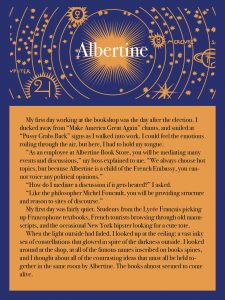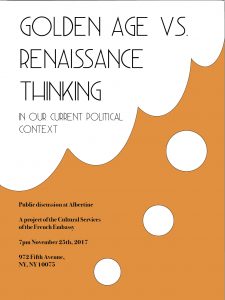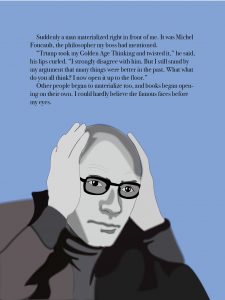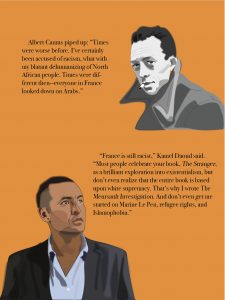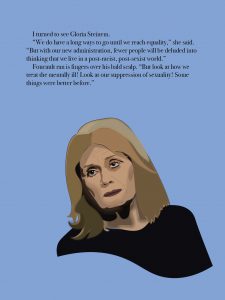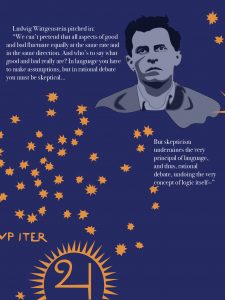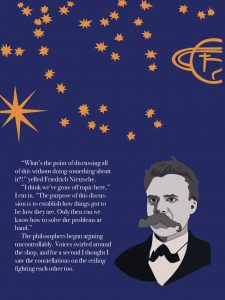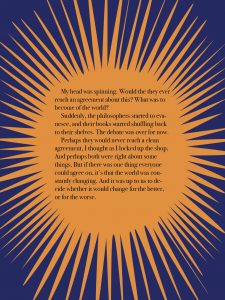Over spring break I experimented with fusing plastic bags together to create fabric for my bustiers. The process begins by putting 2-6 layers of plastic over tracing paper and laying it all on an ironing board. Then you put another sheet of tracing paper over the plastic, and iron over that. The heat of the iron and the type of plastic decides the texture of the final product. I got a lot of leathery textures and when I ironed plastic on a very high heat and held it down in one place for a few seconds, I found that the plastic began to lace. I’m thinking of making white plastic lace and cutting it in a scalloped design to create the look of sea-foam, and using it for my ocean-themed bustier. I will be using blue and white marbled fabric I made for the top of that bustier. To go with this, I also made a cuff from cut soda and beer cans, deliberately showing labels and designs on the cans to remind people that this was made by humans, and of the tragic effect we have had on nature. That is my idea for the ocean bustier; to evoke the ocean with human-made materials that actually pollute the ocean in the attempt to make people think critically about what we’re doing to our planet.
The second bustier will be in a colonial style, with tie-on sleeves. The fabric will be fused with slogans and words from plastic bags I have collected, showing that capitalism is all around us. I want to show both the earlier times of colonialism and our current day capitalism, provoking the wearer and viewer of my piece to think about how the two connect. One of the slogans on a bag I found says I have says “I just HAD to have it!”, which could refer to both consumerism and the desire to occupy territory. I’m not sure what color barricades I will be using, but I create a leathery orange texture that might work. I think it’s fitting that this is a bustier because capitalism and things leftover from the colonial era are all around us, and can trap us in a suppressing society—much like a corset traps a woman’s body.
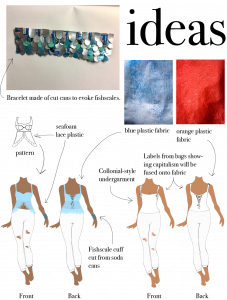
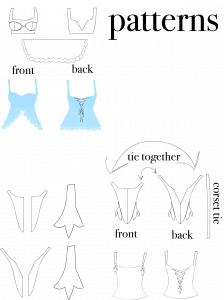
My next step, now that I have made fabric and the bracelet, will be to begin sewing and continue collecting plastic bags with designs that I want to use. I will be using google, classmates friends and family, and school sewing workshops to learn about sewing. The next step will be to put it all together and figure out where slogans should appear. Then, if I have time, sizing for my models and photoshoots at Coney Island, a very famous spot for ocean pollution as well as capitalism.

